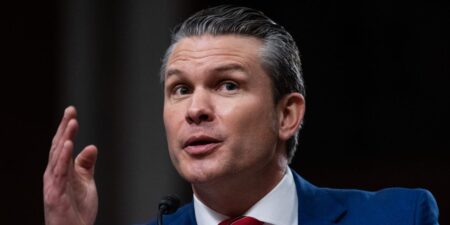- Ferring Pharmaceuticals, a Swiss biopharma firm, focuses on worker well-being and DEI.
- Purvi Tailor, head of human resources in its US business, is on BI’s Workforce Innovation board.
- This article is part of “Workforce Innovation,” a series exploring the forces shaping enterprise transformation.
A lot of companies say they are like a family, but at Ferring Pharmaceuticals, a privately owned biopharmaceutical company headquartered in Switzerland, family-centrism is part of doing business.
“In the US, we are a leader in several therapeutic areas, including reproductive medicine, orthopedics, and gastroenterology,” said Purvi Tailor, Ferring’s head of human resources in the US. “Our mission is to help people build families and live better lives. It’s a purpose that the employees that work here can feel very connected to.”
Tailor joined Ferring in 2021 following roles at Johnson & Johnson, American Express, and JP Morgan.
She said that Ferring has grown more intentional about focusing on worker well-being, which is particularly important for the highly competitive field of healthcare. “The war for talent is always on and the best talent always have options,” she said.
The following interview has been edited for length and clarity.
What are the benefits for companies focused on worker well-being?
Our overarching philosophy is that if our workers have a good sense of well-being, ultimately, it helps our business be that much more successful. We’ve defined well-being in a holistic way, so it’s not just about physical well-being; it’s also about mental well-being and financial well-being. We’ve implemented various initiatives in the last two to three years that focus on each of those.
You can provide a lot of tools and resources, but if you don’t have the right culture within the company that people are experiencing, that obviously has a much more detrimental impact on employee experience. So, our approach is twofold. First, the benefits and the policies. And second, creating the right type of workplace that people want to be a part of.
What specific programs are targeting diversity, equity, and inclusion?
Relative to other companies that I’ve worked for, in some ways we’ve had the luxury to start a little bit later. Whereas some companies have been doing this for 20 years, for us it became more of a burning platform over the last couple of years.
Since Covid and all the various things that have happened since, having an inclusive culture has really become one of the more important things for us.
Because inclusion is something that can be very personal and difficult, we’re partnering with an external event vendor to create smaller group experiences. We put a lot of things on the table and really try to make it an inclusive environment for understanding, sharing stories, and talking about different scenarios that happen in the workplace.
We used scenarios that we’ve seen either happen at Ferring or outside, but real, lived, everyday kind of things that actually happen. Leaders found that really meaningful because it gave them an opportunity in a very safe environment to explore those situations and recognize them when they see them.
The goal is to make sure that when they go back to their offices or desks, they’re like, ‘Okay, actually, I’m gonna be able to use that as I start to see things.’
As Ferring has grown in the US, you’ve had to start many programs from scratch. What advice do you have for other companies that are just getting started thinking about DEI and worker well-being initiatives?
What’s really important is to ensure that whatever you’re doing, you can connect it with the values of your company.
With all of the various things that we’re doing, especially in the wellness and DEI space, they align well with our values and our mission of helping people live better lives. It needs to come from an authentic place. Because it’s sort of obvious when people are faking it.
Our head of DEI in the US has so much passion for this space, and that really drives her as an individual and her purpose. The quality of what she puts out is remarkable, and she’s able to create the right narrative that employees and leaders who are in positions to share it are able to grab some of that enthusiasm.
What policies demonstrate your focus on worker well-being?
One of the biggest things we’ve done in the last two years is a fertility benefit program called Building Families at Ferring with unlimited financial support for your journey, whether that’s IVF, surrogacy, or adoption. So it covers all the many pathways that people could take to build a family.
It also offers 26 weeks of paid parental leave and the policy is agnostic of your marital status and your family structures. It’s truly a benefit for all that want to build a family.
It’s so core to our business. We thought we needed to give back to employees in the same way that we want to show up in the marketplace.
What workforce issues are commonplace in the pharmaceutical industry?
Attrition is systemic; it’s just the norm. Over the last few years, we’ve managed to really stabilize the organization from an attrition perspective more so than we ever have in the previous five years.
For us, retention of our talent is critical, as I know it is for all companies. You want to retain the best and make sure that they’re developing and getting to whatever their aspirations are. Pharma is very competitive.
We recently launched a uro-oncology business, and in the early part of this year, we hired about 60 people with roles across functions, including sales, marketing, finance, and medical. If the pharma market is generally very competitive, oncology is even more so. The things that we can do to make this a great place to work are a big part of how we approach that piece of talent management.
Read the full article here
















